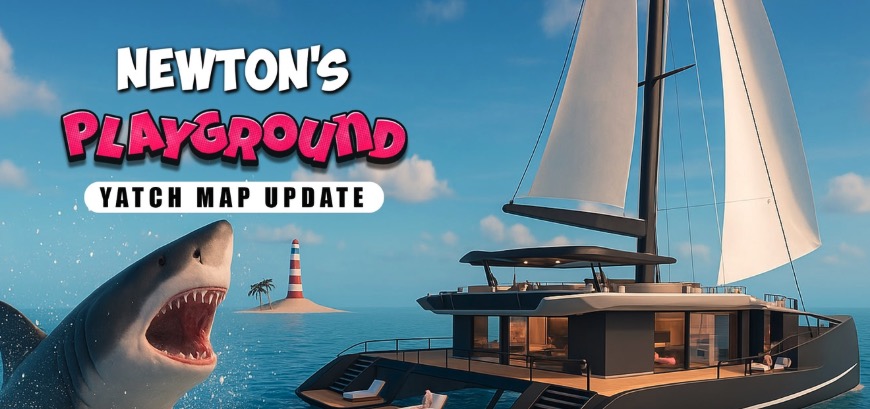Virtual reality faces a pivotal moment in 2025. While smart glasses dominate headlines and Quest sales fluctuate, developers push boundaries where VR excels: immersive worlds demanding physical interaction. Physics sandboxes like Besiege VR prove this-their recent success shows players crave tactile experimentation impossible on flat screens. When you can grab, twist, and collide with virtual matter using natural gestures, abstract concepts become tangible playgrounds.
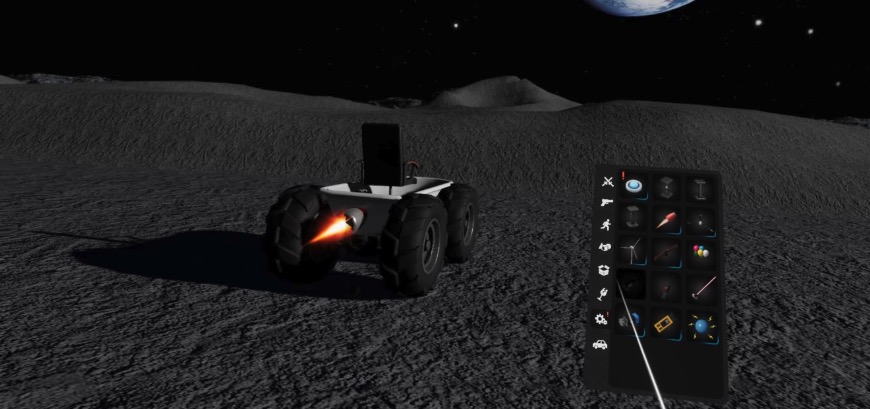
Introduction: Where Physics Meets Play in VR
Newton’s Playground arrives amid this shift, transforming complex physics into intuitive hands-on discovery. Unlike passive experiences, it leverages VR’s spatial computing to make gravity, momentum, and material properties feel real. Consider how stacking blocks becomes a study of center-of-mass, or how trajectory planning evolves into applied ballistics. This approach aligns with Meta’s findings on ideal VR sessions-20-40 minutes of focused engagement where learning emerges through doing.
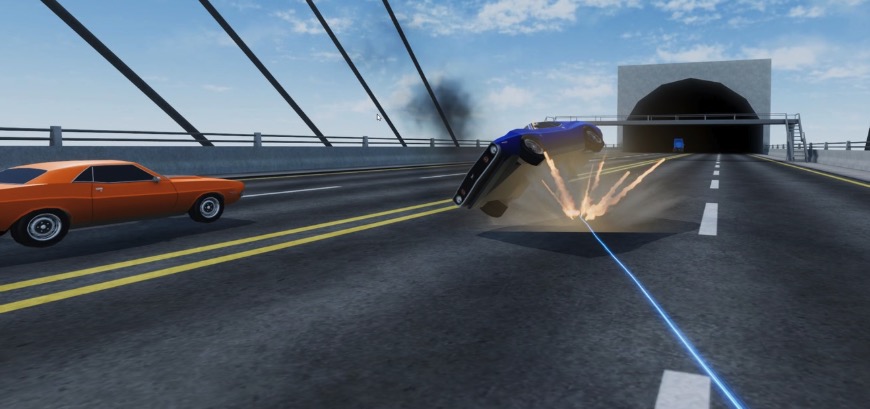
Why does this matter? As Apple doubles down on visionOS and mixed reality blurs lines, dedicated VR titles must showcase what headsets uniquely offer. Physics simulations achieve this by turning your living room into a dynamic laboratory. Here, failure teaches as much as success-a collapsed bridge reveals structural weaknesses more memorably than any textbook diagram. Isn’t that how Newton himself discovered gravity?
Core Mechanics: When Virtual Forces Feel Real
Newton’s Playground leverages Meta Quest’s hand-tracking and controller haptics to transform abstract physics concepts into visceral experiences. Unlike traditional sandboxes, every interaction follows strict Newtonian principles-grab a wooden block and feel its weight through subtle controller vibrations; release it mid-air and watch gravity accelerate it at 9.8m/s². The physics engine calculates mass, friction, and air resistance in real-time, allowing players to conduct experiments impossible in reality. Try soaking cloth in virtual water-its increased weight alters pendulum swings, demonstrating fluid dynamics without messy cleanup.
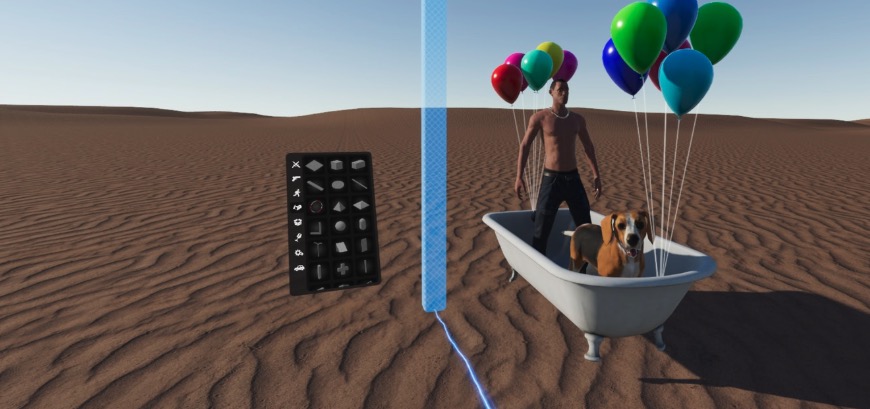
Performance optimization makes this possible. While flat-screen physics games handle thousands of particles, Quest 3’s Snapdragon processor maintains 90fps by dynamically simplifying collision meshes during complex simulations. When a player topples a Jenga-like tower, polygons reduce intelligently-retaining visual fidelity while preventing lag. This technical balancing act enables large-scale destruction without motion sickness, a frequent VR pitfall. Consider how Besiege VR limits object counts per scene; Newton’s Playground counters by streaming environments in chunks, allowing grander experiments within hardware constraints.
Educational design integrates subtly. Challenges escalate from basic balance puzzles to multi-force systems-build a bridge supporting dynamic loads, then introduce wind resistance. Failed designs collapse with instructive visualizations: red stress lines highlight structural weaknesses, while trajectory arcs display projectile vectors. These features address Meta’s research on optimal 20-40 minute sessions; each puzzle delivers concentrated ‘aha’ moments. Why memorize equations when adjusting a trebuchet’s counterweight teaches leverage intuitively?
Market context sharpens its appeal. As UploadVR reports Boxing Underdog’s revenue surge, demand grows for physically engaging VR titles. Yet with smart glasses siphoning casual users (per Gizmodo), Newton’s Playground doubles down on VR’s unique strengths. Unlike visionOS apps favoring visual overlays, it demands full-body engagement-crouching to inspect foundation stability or ducking debris from explosive experiments. This active immersion creates sticky learning; players recall force diagrams better after physically feeling torque while rotating gears.
Practical tip: For stable constructions, prioritize low centers of mass. Place heavier objects beneath lighter ones-like anchoring balloon lifts with stone bases. Avoid brittle materials like ice for load-bearing elements unless cooled below -10°C in the environment settings. Warning: Over-engineering wastes resources. Sometimes a single angled plank solves what ten crossbeams cannot.
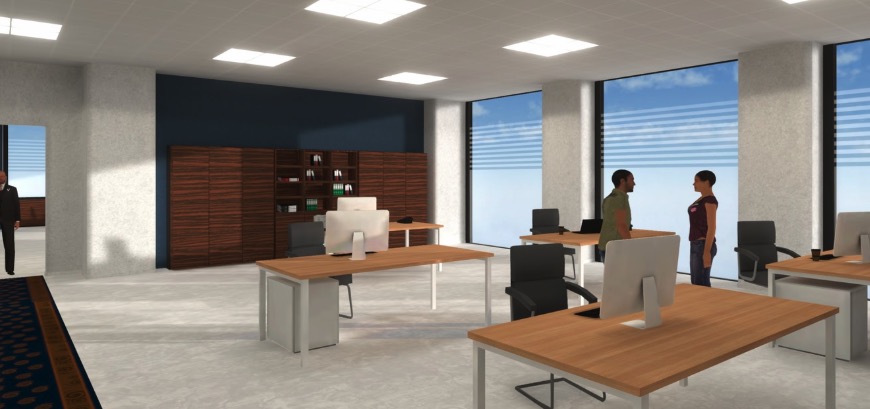
Unobvious alternative: Repurpose objects unconventionally. Sticky gel intended for adhesion becomes shock-absorption when layered under collapsing structures. A failed catapult transforms into a pendulum clock by adding ropes and weights. The game tracks such inventive solutions, rewarding points for creative physics applications beyond preset goals.
Conclusion: Charting VR’s Path Through Tactile Innovation
Newton’s Playground demonstrates VR’s enduring advantage: transforming abstract physics into muscle-memory understanding through unmediated interaction. As smart glasses like Ray-Ban Meta capture casual users (Gizmodo notes they’re siphoning VR’s audience), dedicated headsets must double down on experiences demanding full-body engagement-precisely where physics sandboxes thrive. Boxing Underdog’s revenue surge (UploadVR) proves players crave physically intense simulations, validating this strategic niche.
For developers, this signals opportunity. Rather than competing with visionOS’s passive overlays (where Apple remains “very focused” per Tim Cook), build for VR’s tactile strengths-weight transfer, collision feedback, and spatial problem-solving. Players should similarly prioritize titles rewarding physical experimentation; try replaying Newton’s Playground limiting material choices or manipulating only rotational forces. These constraints reveal emergent physics behaviors no tutorial could explain.
Meta’s 20-40 minute engagement sweet spot remains crucial. Treat sessions like lab experiments: isolate variables, observe systemic consequences, then iterate. When your suspension bridge collapses, analyze stress distribution before rebuilding-this deliberate approach yields deeper intuition than rapid-fire attempts. VR’s future belongs to such embodied learning, where failure teaches as effectively as success.
Ultimately, Newton’s Playground isn’t just entertainment-it’s proof that VR’s survival hinges on leveraging what flat screens and smart glasses cannot replicate: the visceral sensation of virtual matter obeying real-world laws in your hands.

